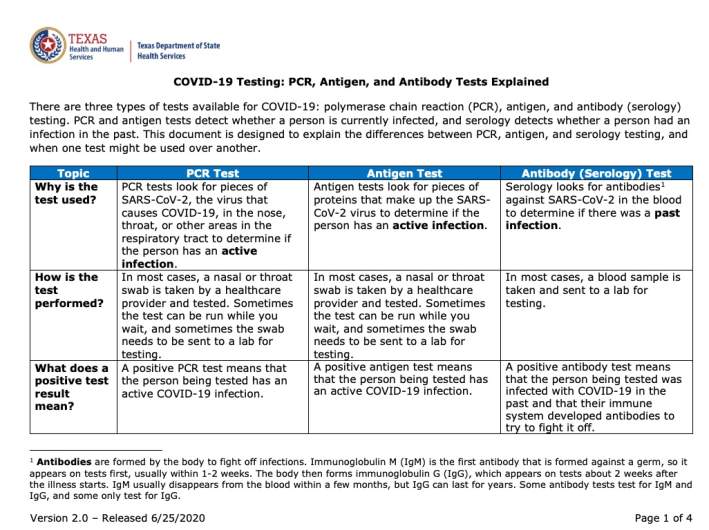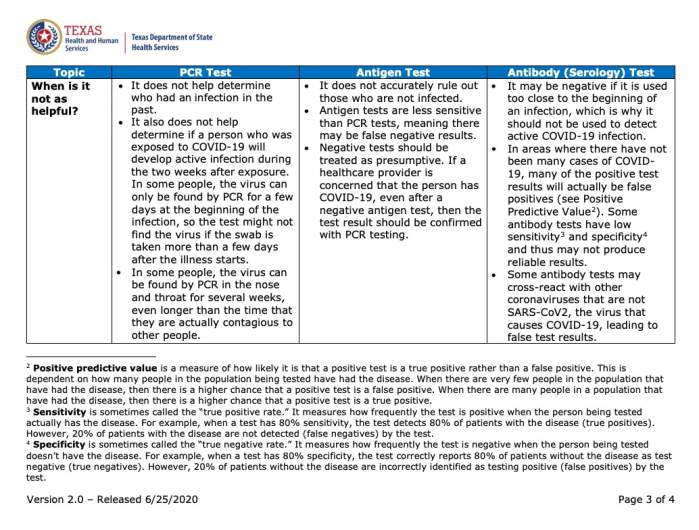
GEtty This undated handout photo from the Centers for Disease Control and Prevention (CDC) shows a microscopic view of the novel coronavirus.
Is Texas inflating coronavirus case numbers? An article went viral after it revealed that in San Antonio, probable cases were counted among the confirmed COVID-19 cases in the city. But what exactly does this mean? In this case, San Antonio was counting positive antigen tests as confirmed cases, which it is no longer doing.
Here’s what you need to know.
The Statesman reported on July 15 that the San Antonio health department just started separating confirmed and probable cases that week. This led to 3,484 cases being removed from the Bexar County totals.
Chris Van Deusen, a spokesman for the Texas Department of State Health Services, told the Statesman: “Since we report confirmed cases on our dashboard, we have removed 3,484 previously reported probable cases from the statewide and Bexar County totals.”
But this isn’t quite the full story, according to a post shared on social media by the Texas Department of State Health Services (DSHS). In a Facebook post on July 15, the Texas Department of State Health Services wrote:
The San Antonio Metro Health District has clarified its reporting to separate confirmed and probable cases, so the Bexar County and statewide totals have been updated to remove 3,484 probable cases. The local case count previously included probable cases identified by antigen testing but not those from antibody testing or other sources.
According to the Texas DSHS, the probable tests that were added to the local confirmed case count (and then removed) were not from antibody tests or people who lived with people who tested positive but didn’t test positive themselves. The probable cases that had been included were actually “probable cases identified by antigen testing.”
Steve Eagar from Fox DFW shared on Facebook that Texas DSHS wrote him and explained the meaning behind the probable antigen cases:
“The probable cases did test positive for COVID-19 by an antigen test. Antigen tests detect current COVID-19 infections but are considered probable cases under the national case definition used by the CDC.”
Eagar noted that these antigen tests are also considered “probable” by the Texas DSHS. By those definitions, they should not have been counted among the confirmed cases. However, they also weren’t “faked” positive tests, as some shared on social media.
KTSA reported that San Antonio views both positive antigen tests and positive molecular tests as being confirmed cases. So the city’s count will continue to include both in its confirmed coronavirus case count, but they will separate the numbers when sending them to the state.
How Antigen Tests Work
There are several categories of tests, including two types of COVID-19 tests and one antibody test. The antibody test checks if you developed antibodies from a possible past infection. At one point, Texas was combining positive antibody (serology) tests with positive COVID-19 tests, which made case counts appear higher, KVUE reported. It was a small percentage of the total cases, but still enough to cause concern. These are now reported separately as of late May.
In addition to the serology tests, there are two types of COVID-19 tests that check for a current infection. You can learn more on the Texas DSHS’s “COVID-19 Testing Explained” PDF updated as of June 25, 2020, linked to from this webpage. A screenshot from the first page is below.
According to the Texas Health and Human Services, the two COVID-19 tests are a PCR test versus an antigen test.
Both a PCR and an antigen test reveal that the person has an active COVID-19 infection. PCR looks for pieces of SARS-CoV-2 in the nose, throat, or other areas of the respiratory tract. This test is usually taken via a nasal or throat swab from a healthcare provider, and sometimes it’s sent to a lab for testing.
The antigen test, meanwhile, might also be taken from a nasal or throat swab. It looks for pieces of proteins that make up the SAR-CoV-2 virus. Texas HHS noted that a negative PCR test means “the person was probably not infected at the time their sample was taken. However, it doesn’t mean they won’t get sick – it only means that they didn’t have COVID-19 at the time of testing.”
A negative antigen test, meanwhile, means that the proteins weren’t detected.
“A negative test does not rule out COVID-19. If there is still concern that a person has COVID-19 after the negative antigen test, then that person should be tested again with a PCR test,” the Texas HHS noted.
The antigen test is less expensive than the PCR test. The HHS noted on its PDF file that the antigen test “does not accurately rule out those who are not infected… Antigen tests are less sensitive than PCR tests, meaning there may be false negative results. Negative tests should be treated as presumptive. If a healthcare provider is concerned that the person has COVID-19, even after a negative antigen test, then the test result should be confirmed with PCR testing.”
Texas has had a total of 298,237 confirmed coronavirus cases as of the time of this article’s publication. So the 3,484 that were removed accounted for only about 1.1% of the total cases.
READ NEXT: Daily COVID-19 Updates

